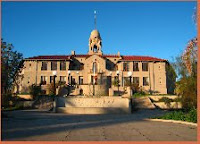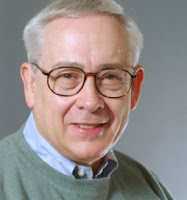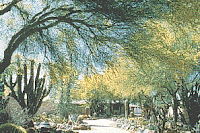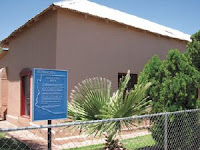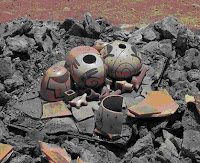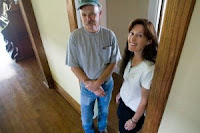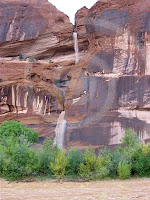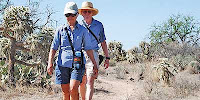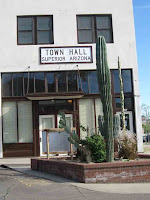[Source: Patricia Myers, Concerned Citizens for the Kerr Cultural Center] -- The Kerr Cultural Center conservation easement will be voted on by the Scottsdale City Council at 5 p.m. Tuesday, June 17, at Scottsdale City Hall, 3939 N. Drinkwater Blvd. (south of Indian School Road between Scottsdale Road and Miller Road). This agreement between the City and Arizona State University (via the Arizona Board of Regents) will protect the two adobe buildings and surrounding landscape, Resolution 7615 on the Consent Agenda, which predicts its passage. A Scottsdale Historic Preservation commissioner will speak in favor, as will Patricia Myers, representing nearly 1,000 signers of our support letter.
If you wish to attend, fill out a Comment Card (for Request to Speak, or use the card to log your support). That will demonstrate ongoing support, as at the three previous Historic Preservation Commission meetings, where more than 150 supporters attended and nearly 50 spoke. CCKCC also suggests going to
http://www.scottsdaleaz.gov/, click on City Council agenda. It's easy to submit a comment of support for Item 23 (unless the Item numbers have changed), which is forwarded to mayor and council members.
The Kerr Conservation Easement protects the two adobe buildings and 0.459 acres on which they sit. It does not include the parking lot, interior aspects or usage, despite those elements specifically advocated by HP Commissioners at previous public hearings. The HP Commission had asked that negotiations between the city and ASU include all aspects of the Kerr center's physical state and function as a cultural venue, the stated intention when Louise Lincoln Kerr willed the two buildings and 1.65 acres to ASU in 1977. Despite the city's request, ASU would not agree to the inclusion of the entire 1.65-acre property. CCKCC continues to emphasize that the value of the Kerr Center to the community lies in its function as a cultural venue, not just two old adobe buildings that will be nice to look at.
At the Council meeting, CCKCC will acknowledge the importance of the easement to protect the two buildings from destruction, but also express disappointment that the easement does not honor Mrs. Kerr's stated intention in her will, since it does not specify the usage and essential parking lot.
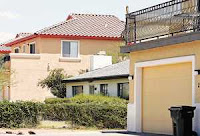 [Source: Tom Beal, Daily Star] -- Diana Lett doesn't believe students could or should be excluded from her neighborhood just north of the University of Arizona. She was a graduate student herself when she moved into her Craftsman bungalow a couple of blocks from campus 22 years ago. But she didn't move in with five other students and six cars.
[Source: Tom Beal, Daily Star] -- Diana Lett doesn't believe students could or should be excluded from her neighborhood just north of the University of Arizona. She was a graduate student herself when she moved into her Craftsman bungalow a couple of blocks from campus 22 years ago. But she didn't move in with five other students and six cars. 